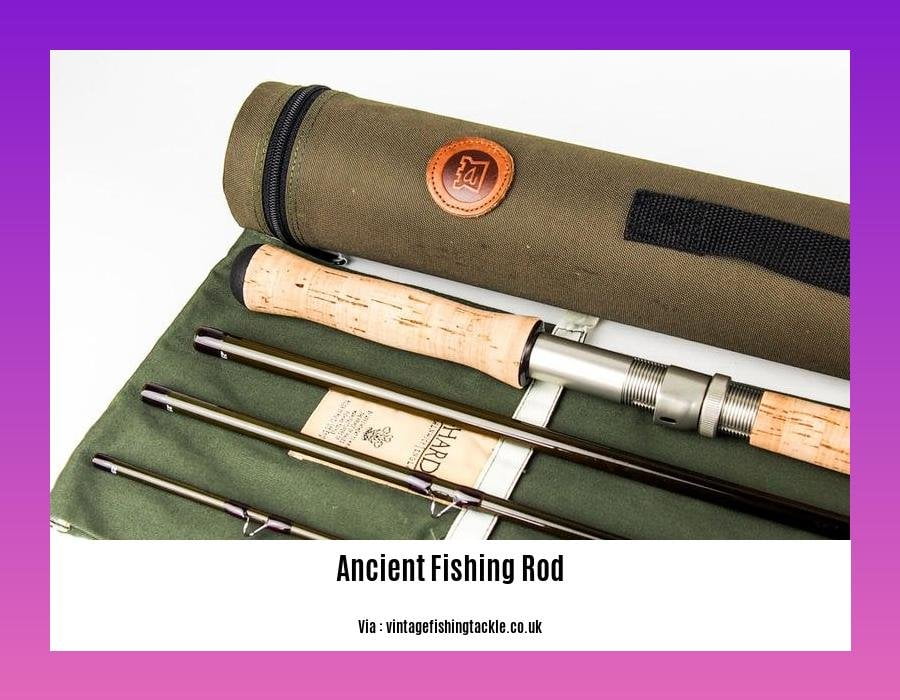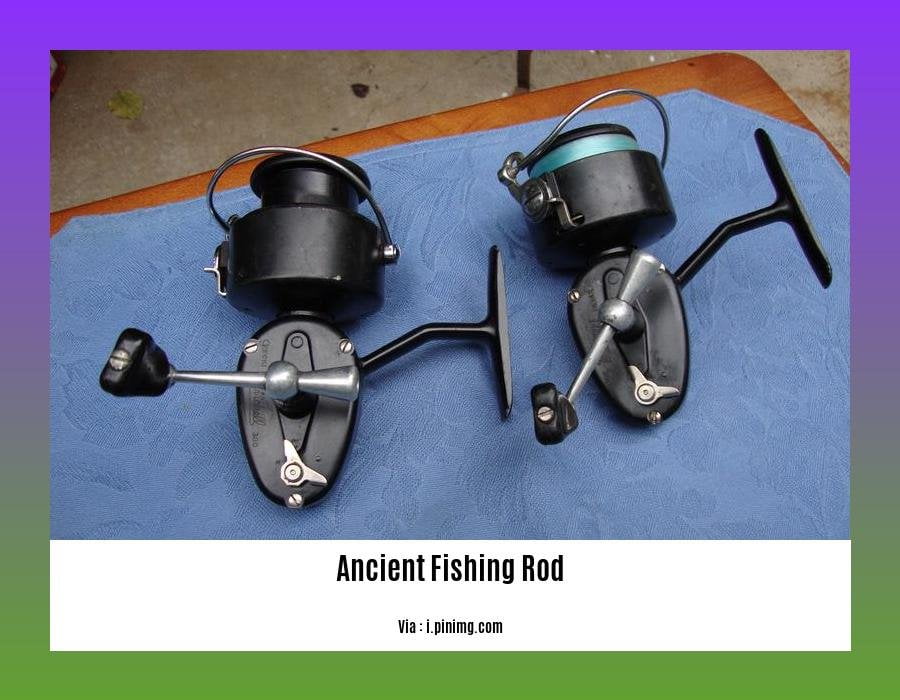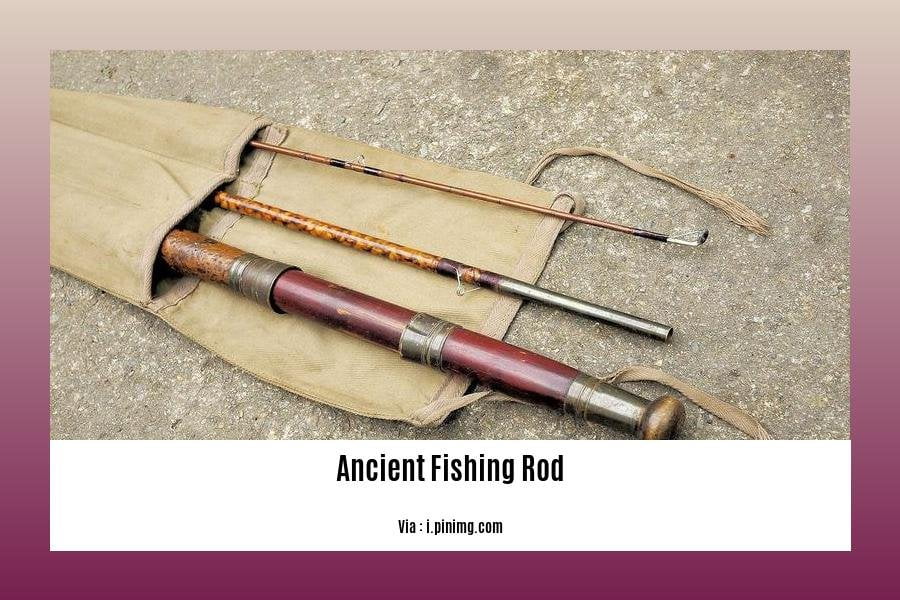Journey with us as we unravel the timeless allure of ancient fishing rods in [Unraveling the Timeless Allure: A Journey Through the History of Ancient Fishing Rods]. Dive into the depths of angling history as we uncover the origins and evolution of this iconic tool, exploring its cultural significance and the ingenuity of techniques employed by anglers throughout history. From humble beginnings to intricate craftsmanship, we’ll shed light on the enduring legacy of the ancient fishing rod, revealing the artistry and innovation that have shaped this essential instrument of the angling tradition.
Key Takeaways:
Ancient fishing rods were crafted from diverse materials like bamboo, reeds, and animal hides.
The earliest recognizable fishing rod was documented in ancient Egyptian stone engravings around 2000 BCE.
Cave paintings from the 2nd century depict the use of fishing rods.
Ancient fishing rods were made from various wood types, including hazel, willow, silver poplar, linden, larch, thorn, juniper, beech, ash, and spruce.
These rods were flexible, strong whips, often obtained and processed by the fishermen themselves.
Bamboo fishing rods were prevalent in Asian countries.
Ancient Fishing Rod: A Journey Through History


In the realm of angling, the ancient fishing rod stands as a testament to human ingenuity and our enduring connection with the aquatic world. Its origins, shrouded in the mists of time, trace back to a shared desire among our ancestors to harness nature’s bounty from rivers, lakes, and seas. From humble beginnings to intricate craftsmanship, the ancient fishing rod has evolved alongside human history, shaping the way we interact with aquatic ecosystems.
Unveiling Ancient Fishing Methods
Our earliest ancestors relied on rudimentary fishing techniques, fashioning rudimentary ancient fishing rods from available natural materials such as reeds, bamboo, and animal hides. As civilizations blossomed, so too did the sophistication of fishing rods. The ancient Egyptians, renowned for their advancements in various fields, are credited with creating one of the earliest known ancient fishing rods dating back to approximately 2000 BCE.
A Tapestry of Cultural Influences
The ancient fishing rod has played a pivotal role in shaping cultural traditions and beliefs across the globe. In ancient China, the ancient fishing rod was revered as a symbol of patience, perseverance, and harmony with nature. Native American tribes crafted ancient fishing rods from flexible saplings, imbuing them with spiritual significance. In medieval Europe, fishing with an ancient fishing rod was a pastime enjoyed by both nobility and commoners, fostering a sense of community and shared experiences.
A Technological Odyssey
The evolution of the ancient fishing rod reflects human advancements in technology and materials. From the Bronze Age, when metal hooks and lines revolutionized fishing, to the introduction of composite materials in modern times, each innovation brought increased efficiency and versatility to this age-old tool. Today, anglers have access to an array of ancient fishing rods, each tailored to specific fishing techniques and environments.
Preserving Ancient Fishing Heritage
As we traverse the digital age, it is crucial to safeguard the legacy of the ancient fishing rod. Museums, historical societies, and dedicated enthusiasts play a vital role in preserving these artifacts, ensuring that future generations can appreciate their beauty and significance. Moreover, contemporary anglers can honor this heritage by incorporating traditional fishing methods into their own angling adventures, forging a tangible link to the past.
The ancient fishing rod stands as a testament to human ingenuity, cultural diversity, and our enduring connection with nature. By delving into its history, we gain a deeper appreciation for the artistry, ingenuity, and resilience of our ancestors. Whether casting a line in a tranquil stream or battling a mighty fish in the open sea, the ancient fishing rod serves as a timeless symbol of our shared human experience and the enduring allure of the angling pursuit.
Want to know fascinating information about ancient Greece? Explore our ancient greece lesson plan article for an exciting journey into their world. Learn about ancient Greece interior design, unveiling their exquisite taste in home aesthetics. Dive deeper into their philosophy with our exploration of the ancient Greek word for life, revealing their profound understanding of existence.
Ancient Fishing Rod And Reel
As we journey through time, we discover that the ancient fishing rod and reel hold a captivating story of human ingenuity, resourcefulness, and our timeless connection with the aquatic world. The history of these tools is a testament to our enduring pursuit of sustenance and recreation.
Key Takeaways:
The earliest known fishing rods date back to approximately 2000 BCE, with evidence found in ancient Egyptian stone inscriptions.
Ancient fishing rods were crafted from various natural materials like bamboo, reeds, and animal hides, showcasing the diversity of resources available to our ancestors.
Fishing played a vital role in ancient societies, providing sustenance, trade, and cultural significance, reinforcing the deep connection between humans and aquatic ecosystems.
The evolution of fishing rods reflects technological advancements, regional adaptations, and changing fishing practices, highlighting the dynamic nature of our relationship with the environment.
The ancient fishing rod represents a tangible link to our past, reminding us of the resilience and creativity of our ancestors, and inspiring us to appreciate the enduring legacy of this timeless tool.
For further reading, explore these sources:
- A Comprehensive History of Fishing Rods: From Ancient Origins to Modern Designs
- The Evolution of Fishing Rods: A Journey Through Time
FAQ
Q1: How far back does the history of fishing rods go?
A1: The earliest known record of a fishing rod dates back to approximately 2000 BCE, based on stone inscriptions from ancient Egypt.
Q2: What materials were used to make ancient fishing rods?
A2: Ancient fishing rods were crafted from various materials, including bamboo, reeds, hazel, willow, silver poplar, linden, larch, thorn, juniper, beech, ash, and spruce. Some cultures also utilized animal hides.
Q3: What is the significance of ancient fishing rods in terms of cultural value?
A3: The ancient fishing rod holds cultural significance as a symbol of tradition, craftsmanship, and the enduring connection between humans and the natural world. It represents the evolution of fishing techniques and the ingenuity of anglers throughout history.
Q4: How did the design of ancient fishing rods differ from modern fishing rods?
A4: Ancient fishing rods were typically made from natural materials and were flexible and strong. They were often crafted by the anglers themselves, allowing for customization and adaptation to specific fishing conditions. Modern fishing rods, on the other hand, are made from advanced materials like fiberglass and graphite and feature specialized designs for various fishing techniques.
Q5: What are some of the most notable ancient fishing rod designs or techniques that have influenced modern fishing?
A5: Ancient fishing techniques such as spear fishing, line fishing, and net fishing have influenced modern fishing practices. Specific rod designs like the bamboo fishing rods of Asian countries and the flexible whip-like rods used in ancient times have also contributed to the evolution of modern fishing rods.
- Amazing March Fun Facts: Unveiling History & Celebrations - April 15, 2025
- Master how to write height: A complete guide - April 15, 2025
- How High Are Your Standards Test: Find Your Perfect Match Now - April 15, 2025
















